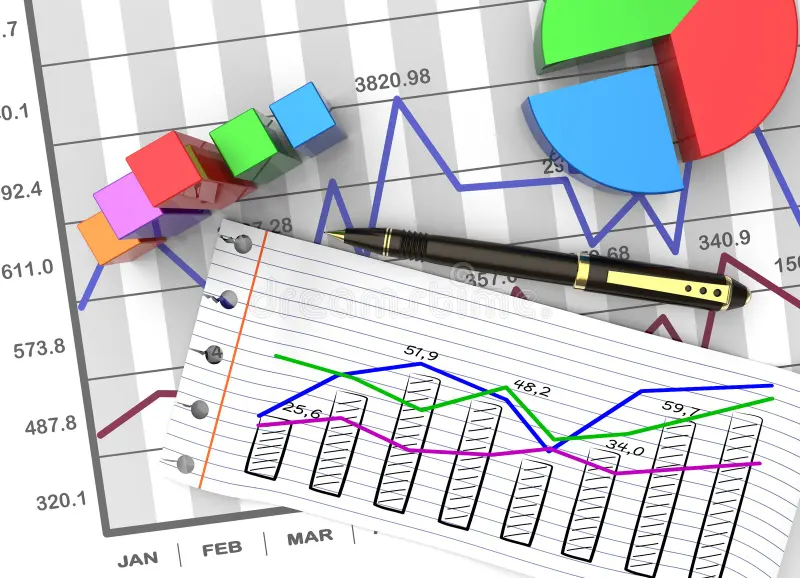Turning Economic Data Into Investment Opportunities
For years, economic data has been the cornerstone of institutional investing. Hedge funds, mutual funds, and professional traders have long had the resources to sift through mountains of macroeconomic reports, analyze them in real-time, and use that data to inform their investment decisions. But with the rise of retail investing, everyday investors now have more access to economic indicators than ever before. The question remains, though: how can retail investors use economic data like the pros?
Understanding the economic landscape is essential for making informed investment decisions. Data like Consumer Price Index (CPI), jobless claims, and Federal Reserve (Fed) minutes can have a significant impact on markets, influencing everything from interest rates to stock sector performance. Retail investors often feel overwhelmed by the sheer volume of data available, but with a strategic approach, these macroeconomic reports can become powerful tools for refining investment strategies.
Decoding Economic Data: CPI, Jobless Claims, and Fed Minutes
To make the most of economic data, it’s important first to understand how the key indicators—CPI, jobless claims, and Fed minutes—impact the broader market.
CPI: The Inflation Indicator
The Consumer Price Index (CPI) measures the average change in prices paid by consumers for goods and services over time, serving as the primary gauge for inflation. The CPI is a crucial tool for investors because inflation is one of the most significant factors that affect the economy, corporate earnings, and stock market valuations.
When inflation rises beyond the Fed’s target (typically around 2%), the central bank is more likely to raise interest rates in an attempt to cool off the economy. For retail investors, understanding CPI data can help in identifying inflation trends that will impact specific sectors and asset classes.
For instance, a rising CPI often signals a tightening monetary policy, which can be negative for growth stocks (especially tech stocks that rely on low interest rates). On the other hand, sectors like utilities, consumer staples, and energy—often considered inflation-sensitive or defensive—tend to outperform when inflation is rising. Retail investors can adjust their ETF or sector allocations accordingly, rotating into inflation-hedging ETFs, such as those focused on commodities, Treasury Inflation-Protected Securities (TIPS), or energy stocks.
Jobless Claims: A Key Employment Health Indicator
Jobless claims data, which tracks the number of individuals filing for unemployment benefits for the first time, is another critical economic indicator for investors. Low and declining jobless claims suggest a healthy economy with strong employment growth, which is typically bullish for stock markets, particularly consumer discretionary sectors.
Conversely, rising jobless claims can signal economic weakness or an impending recession. If the labor market is deteriorating, investors might consider reducing exposure to cyclical stocks (such as consumer discretionary, industrials, and financials) that are sensitive to economic downturns. Instead, they could rotate into defensive sectors, such as healthcare or utilities, which tend to be less affected by economic slowdowns.
Retail investors can use jobless claims data to gauge whether the economy is in a strong or weak phase and adjust their portfolio accordingly. By following the weekly initial jobless claims report and interpreting it in conjunction with other economic data, investors can make informed decisions about sector rotation and ETF selection.
Fed Minutes: Understanding Monetary Policy Shifts
The Federal Reserve’s minutes, released after the central bank’s regular meetings, provide deep insights into the Fed’s thinking on economic conditions, inflation, and interest rates. While the initial Fed statement may indicate the central bank’s stance, the minutes give investors a clearer picture of the discussions that took place behind closed doors, including the concerns and preferences of individual Fed members.
Retail investors can use Fed minutes to assess the likelihood of future rate hikes or cuts. A hawkish tone in the minutes (indicating a preference for tightening monetary policy) could signal continued interest rate hikes, which would put pressure on growth stocks and reduce consumer spending. A dovish tone (indicating a preference for rate cuts or maintaining low rates) could provide a tailwind for equities, particularly in growth sectors.
By analyzing the minutes of Fed meetings, retail investors can gain an early insight into the future direction of monetary policy. This information is crucial for determining the appropriate strategy—whether it’s rotating into sectors that perform well during high rates (such as financials) or focusing on growth sectors that benefit from a low-rate environment (like tech).
Turning Macro Insights Into ETF and Sector Plays
Now that we have a clearer understanding of how key economic data points influence market trends, how can retail investors translate this information into actionable investment decisions? ETFs (Exchange-Traded Funds) and sector-specific funds are excellent tools for retail investors to take advantage of macroeconomic trends without the need for individual stock selection.

Sector Rotation: Adapting to Changing Economic Conditions
One of the most effective ways to use economic data is through sector rotation. By identifying which sectors will benefit from specific economic conditions (such as rising inflation or a tightening labor market), investors can position themselves for maximum returns.
For example, if CPI data indicates rising inflation, retail investors might consider rotating into energy or materials ETFs, as these sectors tend to perform well during inflationary periods. Conversely, if jobless claims start to climb, indicating an economic slowdown, investors might move into defensive sectors like utilities, healthcare, or consumer staples, which tend to be less affected by recessions.
By analyzing the interplay of CPI, jobless claims, and Fed minutes, retail investors can anticipate economic shifts and make strategic adjustments to their sector and ETF allocations.
Inflation-Hedging Strategies: ETFs and TIPS
For investors looking to protect their portfolios from the eroding effects of inflation, ETFs that focus on inflation-protected assets are essential. Treasury Inflation-Protected Securities (TIPS) ETFs are designed to provide investors with returns that adjust for inflation, helping to preserve purchasing power. In periods of rising CPI, these ETFs become particularly attractive as the government guarantees their principal will rise with inflation.
Commodities, including gold and oil, also provide a natural hedge against inflation. Retail investors can use commodity-focused ETFs or ETFs that track energy sectors to capture potential gains in these inflation-sensitive assets.
Growth vs. Value: Balancing the Effects of Monetary Policy
The Fed’s policy stance, reflected in the minutes and inflation data, has a substantial impact on growth and value stocks. Growth stocks—often associated with high price-to-earnings ratios—tend to outperform when interest rates are low because discounted future earnings are more valuable. However, in a high-interest-rate environment, growth stocks typically underperform, and value stocks—those that are undervalued relative to their fundamentals—tend to shine.
Retail investors can use Fed minutes to anticipate future rate changes and adjust their portfolios accordingly. If the Fed is likely to continue raising rates, shifting towards value-focused ETFs, such as those that track financials or industrials, may provide an advantage. If the Fed is expected to ease, growth-focused ETFs, particularly those in the tech and consumer discretionary sectors, may outperform.
Bond ETFs: The Defensive Play in Rising Rates
During periods of tightening monetary policy, investors often seek defensive positions in bonds. While rising interest rates typically lead to falling bond prices, there are certain strategies that can help mitigate this risk. Bond ETFs that focus on short-duration bonds are less sensitive to interest rate increases than those with longer durations. Retail investors can use these bond ETFs as a buffer during times of rising rates, providing stability and income while avoiding the volatility of long-duration bonds.
Strategic Use of Economic Data: A Summary for Retail Investors
Using economic data effectively can level the playing field for retail investors, providing insights that were once only accessible to institutional players. By paying attention to key indicators like CPI, jobless claims, and Fed minutes, retail investors can gain valuable insights into the direction of the economy and adjust their portfolios accordingly. Sector rotation, inflation-hedging strategies, and tactical shifts between growth and value are all ways that retail investors can leverage macroeconomic data to enhance their investment returns.
It’s important for retail investors to stay informed, understand how economic data influences different asset classes, and use that knowledge to make informed decisions. While it may take time to master the nuances of economic data, the payoff can be significant in terms of better performance and a more resilient portfolio.














































